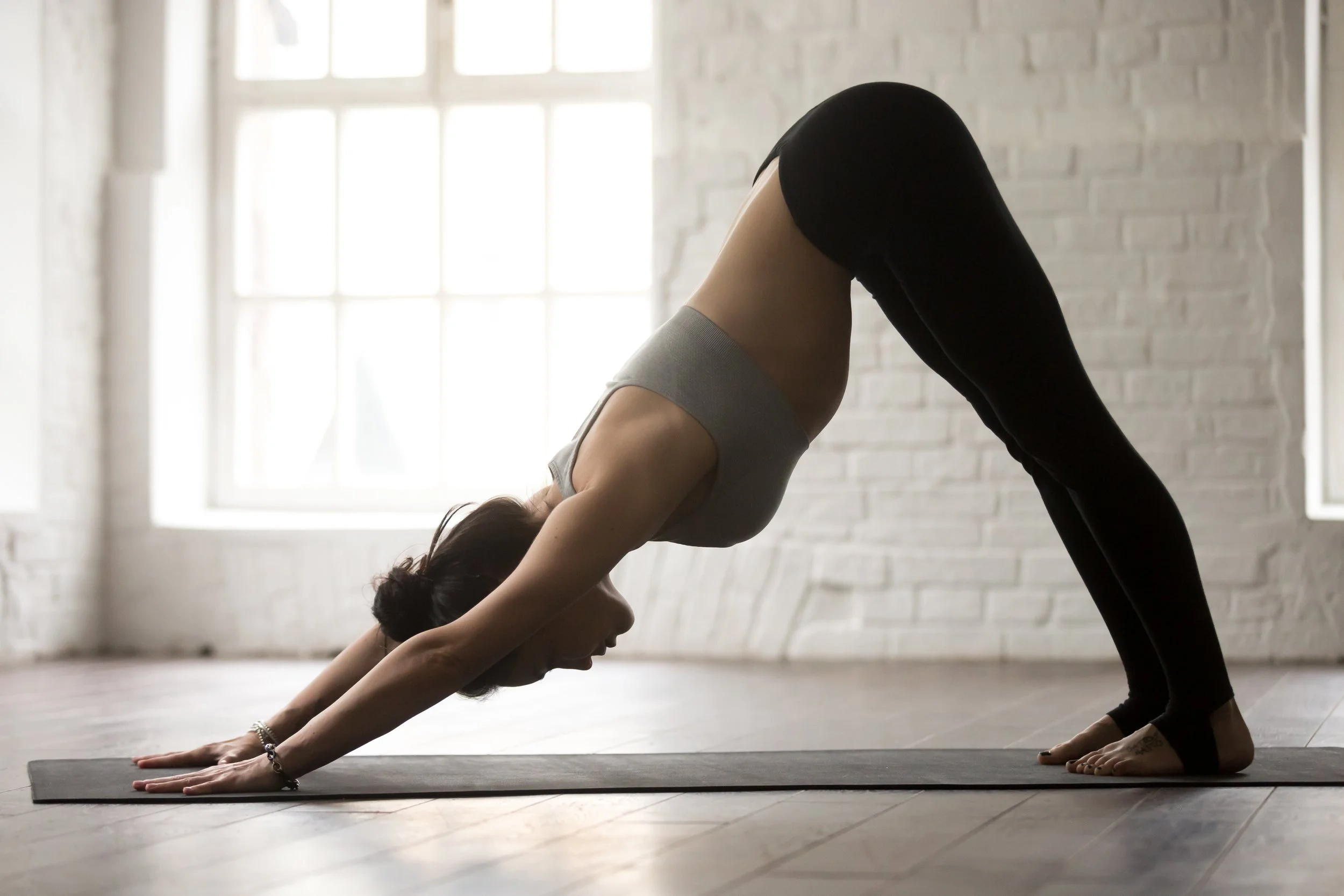From Mat to Muscle: A Guide to Building Strength with Yoga
If you've ever thought of yoga as just a way to relax and unwind, it's time to think again! Did you know that yoga can also be a powerful tool for building strength and muscle? By incorporating yoga into your fitness routine, you can balance the intensity of traditional strength training with the flexibility and mindfulness that yoga offers. Curious about how this combination can help you build muscle and enhance your workouts? In this guide, we'll explore how to effectively use yoga for strength training, offering a unique approach to muscle gain that promises both strength and flexibility. Ready to transform your routine and discover the benefits of yoga for muscle gain? Let's dive in! For more insights, check out this guide on combining yoga and strength training.
Why Choose Yoga for Strength Training?
Yoga for strength training is gaining popularity due to its unique benefits. First, yoga involves bodyweight exercises that can significantly build core strength. Unlike traditional weightlifting, yoga engages multiple muscle groups simultaneously, promoting balanced muscle development.
Yoga is not just about static poses. Dynamic sequences increase your heart rate, enhancing cardiovascular fitness. Yoga also improves balance and coordination, reducing the risk of injury compared to conventional strength workouts. This makes yoga an excellent choice for individuals seeking a holistic fitness approach.
Yoga's emphasis on breath control and mindfulness adds another layer to strength training. By focusing on your breath, you improve concentration and endurance, essential elements for anyone serious about muscle gain.
Understanding the Balance of Flexibility and Strength
Balancing flexibility and strength is key in any workout routine. Yoga naturally encourages this balance by integrating stretching and strengthening exercises. This dual approach not only builds muscle but also enhances joint mobility and function.
Yoga's flexibility focus helps in preventing injuries that often come from stiffness. When muscles are both strong and flexible, they can withstand more strain, reducing the likelihood of tears or sprains. This is especially beneficial for athletes who often push their physical limits.
Incorporating yoga into your strength training routine can enhance your overall physical performance. By improving flexibility, you allow for a greater range of motion in strength exercises, leading to more effective workouts and better muscle growth.
Essential Yoga Poses for Muscle Gain
Some yoga poses are particularly effective for building muscle. Chair pose, for example, strengthens the legs and glutes, while engaging the core. Plank pose is another excellent pose that builds core strength and stabilizes the shoulders.
Another potent pose is the Warrior series, which strengthens the legs and enhances balance. These poses engage major muscle groups, promoting sustainable muscle growth. By holding these positions, you're effectively performing isometric exercises that contribute to muscle endurance.
Inversions, such as headstands, can also be beneficial. They require upper body and core strength, while also helping improve balance and concentration. Remember, consistency and proper form are key to reaping the benefits of these poses.
Incorporating Resistance-Focused Movements
To maximize muscle growth with yoga, incorporate resistance-focused movements. These involve using your body weight to create resistance, similar to weightlifting but with a holistic approach.
1. Start with foundational poses like downward dog and plank to build baseline strength.
2. Progress to more advanced poses like crane or arm balances that challenge your muscles further.
3. Use yoga props like blocks or bands to add resistance and deepen poses, increasing muscle engagement.
Regular practice of these resistance-focused movements can significantly enhance your muscle strength and endurance over time. They also provide a mental challenge, improving focus and discipline, which are vital for overall fitness success.
Enhancing Performance and Reducing Injury
Yoga enhances athletic performance by improving balance, coordination, and flexibility. These elements are crucial for executing strength exercises effectively and safely, leading to better performance outcomes.
Yoga's focus on mindfulness also plays a role in performance enhancement. By maintaining focus and breathing properly, you can push through challenging workouts more effectively. This mental aspect of yoga is what sets it apart as a tool for athletic improvement.
Additionally, by promoting joint health and flexibility, yoga reduces the risk of injuries commonly associated with high-intensity training. This makes it a valuable addition to any fitness routine, especially for those prone to strains and sprains.
Combining Strength and Flexibility Workouts
Combining strength and flexibility workouts is essential for a balanced fitness routine. Yoga naturally integrates these elements, offering a comprehensive approach to physical fitness.
Strength workouts typically focus on building muscle mass, but without flexibility, muscles can become tight and prone to injury. Yoga's stretching poses help maintain muscle elasticity, ensuring you get the most out of your strength training efforts.
Incorporating yoga into your routine helps prevent muscular imbalances. By balancing strength with flexibility, you'll optimize your fitness results, making yoga an essential component of any well-rounded workout plan.
Creating a Balanced Yoga Schedule
Creating a balanced yoga schedule requires incorporating different types of yoga to target various muscle groups. Start by scheduling two to four sessions a week dedicated to strength-focused yoga.
1. Begin with a warm-up using dynamic stretches to prepare your muscles for the workout.
2. Incorporate strength-building poses like chair and warrior poses to engage major muscle groups.
3. Finish with relaxation poses to aid in recovery and prevent muscle soreness.
Consistency is key. By sticking to a regular schedule, you will gradually build strength and flexibility, contributing to long-term muscle gain and overall physical health.
Tips for Integrating Yoga with Traditional Workouts
Integrating yoga with traditional workouts requires strategic planning to ensure both modalities complement each other effectively. Here are some tips to help you blend the two:
Alternate yoga and strength training days to allow time for recovery and muscle rebuilding.
Incorporate yoga as a cool-down after intensive weightlifting sessions to stretch and relax muscles.
Use yoga as a warm-up for cardio workouts to enhance flexibility and prevent injuries.
By following these tips, you can ensure that yoga complements rather than conflicts with your traditional workouts, enhancing both strength and flexibility.
Here's an example of a yoga and strength training weekly schedule.
Supporting Athletes and Busy Professionals
Yoga supports athletes and busy professionals by providing a flexible, accessible workout option that fits into any schedule. With its focus on mindfulness and relaxation, yoga helps manage stress, which is crucial for maintaining overall well-being.
For athletes, yoga enhances performance by improving flexibility and reducing injury risk, allowing for longer and more effective training sessions. For busy professionals, yoga offers a calming respite from hectic schedules while building strength and endurance.
By integrating yoga into their routines, both groups can enjoy improved physical performance and mental clarity, leading to a more balanced lifestyle.
Building Long-Term Strength and Flexibility
Building long-term strength and flexibility through yoga requires dedication and consistency. With its wide variety of poses, yoga targets all major muscle groups, promoting balanced muscle development over time.
Regular practice ensures gradual muscle gain and improved flexibility, contributing to sustained physical health.
Variety in poses prevents workout monotony and engages different muscles, preventing imbalances.
Focus on breath and alignment enhances overall body awareness, leading to more effective workouts.
Incorporating these elements into your yoga practice ensures that you build not only strength but also flexibility, contributing to long-term physical and mental wellness. For more insights, explore Yoga Journal's guide on yoga and strength training or check out the benefits of yoga.
Ready to feel stronger, more flexible, and focused?
If you're curious about how yoga can complement your strength training—and fit seamlessly into your busy lifestyle—we're here to help. At The Uptown Trainer, we design customized programs that blend science-backed strength work with mindful movement to help you perform better, recover faster, and stay grounded.
Reach out today to learn how we can tailor a plan that fits your goals, schedule, and experience level. Whether you're training for performance, longevity, or simply more peace in your day, we’ll meet you where you are—and guide you every step of the way.








